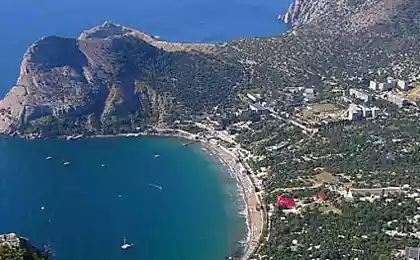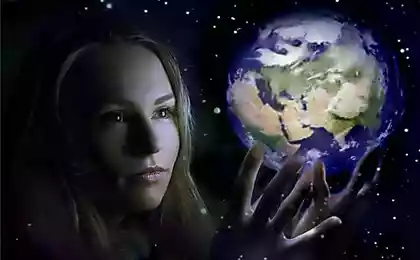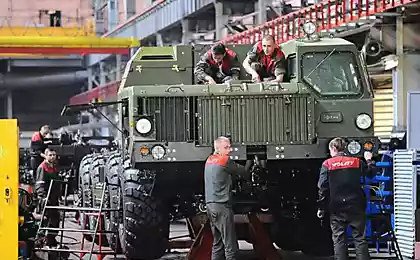710
Su-27: 40 years of the best Russian fighter
Su-27 (NATO: Flanker - «Beat the flank") - Soviet / Russian multipurpose highly mobile all-weather fighter-interceptor.
In January 1971, signing the order to start work on the next aviaproektom, Pavel Sukhoi, one of the best Soviet aircraft hardly knew about the scale of fame and recognition that it will receive new aircraft size. And if they knew, it did not reveal that guess.
New projects developed in the framework of the TFIs (future frontline fighter), received the "brand" the T-10. His story began two years ago, when the Soviet Union started thinking about the answer to the American program FX (Fighter eXperimental), under which created one of the best American fighter F-15 Eagle.
Sources:
tatasoz
slovimsa.net
14 photos + text

Determination of image
The Soviet General Staff has identified the requirements for prospective frontline fighter: he must have a large range of flight, take-off and landing performance, enables faster / damaged runway, maneuverability, providing excellence in close air combat, the traditional "dog dump", and equipment for conducting long-range missile combat outside of visibility.
On the maneuverability is worth looking in more detail. Once in 1950 guided missiles have become part of the arsenal of fighters in the USA and the USSR was decided that the era of air combat maneuvering over - now all the bouts will take place over long distances, using missile weapons. The fallacy of this view shows the Vietnam War: subsonic MiG-17s deprived of their guided weapons, but equipped with a powerful cannon, successfully conducted aerial combat with supersonic fighters, significantly outperforming their maneuverability. The rate of supersonic machines is not always guaranteed them the opportunity to leave. Excellent ability to demonstrate and more modern MiG-21 - these machines were much easier to major US aircraft and supersonic speed combined with high maneuverability.
As a result, the United States began to develop an aircraft that one side did not concede them the then principal of the F-4 Phantom II in combat load and flight range, and on the other - has been able to withstand the manoeuvrable air combat with the MiG-17 and MiG-21. < br />
What guns and melee early to write off, soon proved the conflicts in the Middle East, where maneuverability in combat converged MiGs and "Mirages».
Fuel to the fire poured the Indo-Pakistan battles, where the two sides has both relatively old machines first generation (the British "Hunter" as a part of the Indian Air Force against the American "Sabres" in Pakistan), and modern supersonic machines.
Designers have come to almost identical conclusions: in the USSR, and the US maneuverability of new cars has been given special attention. At the same time there was the modernization of the third-generation aircraft, which was to improve their capacity for close air combat. Both parties took the same concept of acquisition of fighter aircraft, both in the US and the USSR were established at the same time light and heavy fighters of the new generation. The "heavy" machine should not have to give an easy maneuverability.

Difficult birth
High demands made once the future development of the Su-27, a non-trivial task - over the layout of the future fighter work not only in size. In its creation it has contributed immensely to experts from leading scientific research institute of aviation - primarily TsAGI near Moscow and Novosibirsk SibNIA.
Incidentally, it is worth SibNIA thank for the fact that the Su-27 took place in the form in which we know it. In the early 1970s, on "paper" stage of development, the experts of the Research Institute alleges that the layout of the T-10 does not allow you to perform tactical and technical requirements of the Ministry of Defense and exceed the characteristics of the F-15. This disappointing diagnosis was confirmed in 1977 when he began flight tests of the new machine.
Should pay tribute to the courage of leadership KB, which at that time was headed by Evgeny A. Ivanov, was not afraid to admit shortcomings and set up the machine to insist on its improvement. The position was adopted by the Bureau and the Ministry of Defence and the Council of Ministers of the USSR and the Central Committee. Work on the T-10 continued.
In 1981, the air rises renovation Machines - T-10C. The future of the Su-27 has found its shape. Tests have confirmed the superiority of modern Soviet fighter over the F-15. In 1984, the Su-27 went into the series. From that moment to this day in the production plant in Komsomolsk-on-Amur, Irkutsk and Novosibirsk have released a total of more than 1, 3 thousand. Su-27 and its modifications - the Su-30, Su-33, Su-34 Su-35 ...

World fame
The main advantages of the Su-27 is a combination of high agility with equally high ability to fight at long range. This makes the machine Sukhoi formidable opponent at all distances.
Another plus, which established a long-term commercial success of the machine - its modernization potential: Platform 70s of the last century with the installation of modern equipment and weapons got a second wind and can still compete with the best aircraft of the world.
Coming to market in early 1990, the fighter has gained popularity, it is used by the Air Force of 17 countries, it is deservedly considered one of the best aircraft of its generation. A variety of modifications makes it possible to find an acceptable option for a variety of customers - from relatively poor countries in Africa, need modern and not very expensive aircraft to India ready to give a hundred million dollars in cutting-edge machines, rich variety of high-tech equipment and weapons. Su-27 and its modifications have become the best-selling aircraft of the 2000s. Apparently, they will retain this position in the coming years, especially in view of the constant

The technological barrier that stood in front of the developers of aircraft over the past 20 years, and economic difficulties have slowed Adopting a new generation of machines. In these circumstances it is not surprising that the platform of T-10, as well as its overseas opponents, continues to evolve - plans for modernization of the machine in a number of countries for the period up to the 2040s, and, apparently, this is not the final frontier - serial production family aircraft T-10 continues.

...
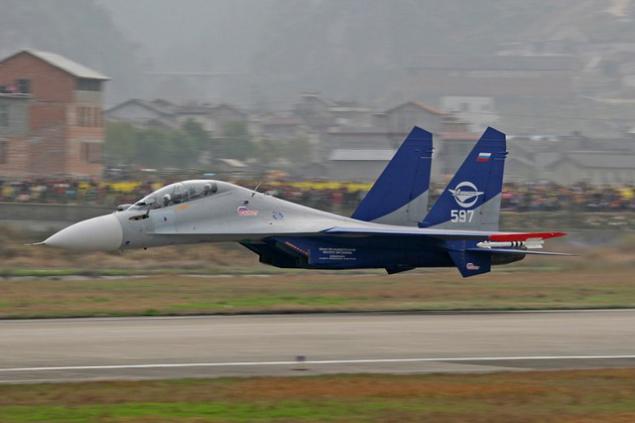
...

...

...

...

...

...

...

... This last
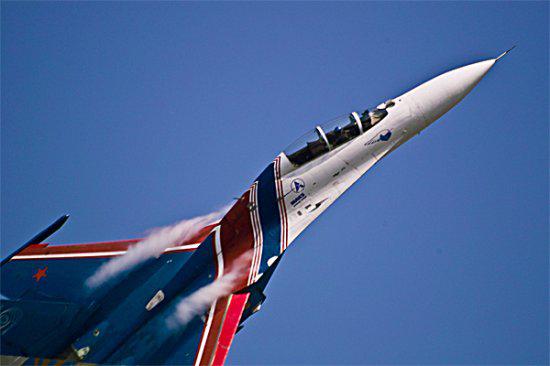
Source:
In January 1971, signing the order to start work on the next aviaproektom, Pavel Sukhoi, one of the best Soviet aircraft hardly knew about the scale of fame and recognition that it will receive new aircraft size. And if they knew, it did not reveal that guess.
New projects developed in the framework of the TFIs (future frontline fighter), received the "brand" the T-10. His story began two years ago, when the Soviet Union started thinking about the answer to the American program FX (Fighter eXperimental), under which created one of the best American fighter F-15 Eagle.
Sources:
tatasoz
slovimsa.net
14 photos + text

Determination of image
The Soviet General Staff has identified the requirements for prospective frontline fighter: he must have a large range of flight, take-off and landing performance, enables faster / damaged runway, maneuverability, providing excellence in close air combat, the traditional "dog dump", and equipment for conducting long-range missile combat outside of visibility.
On the maneuverability is worth looking in more detail. Once in 1950 guided missiles have become part of the arsenal of fighters in the USA and the USSR was decided that the era of air combat maneuvering over - now all the bouts will take place over long distances, using missile weapons. The fallacy of this view shows the Vietnam War: subsonic MiG-17s deprived of their guided weapons, but equipped with a powerful cannon, successfully conducted aerial combat with supersonic fighters, significantly outperforming their maneuverability. The rate of supersonic machines is not always guaranteed them the opportunity to leave. Excellent ability to demonstrate and more modern MiG-21 - these machines were much easier to major US aircraft and supersonic speed combined with high maneuverability.
As a result, the United States began to develop an aircraft that one side did not concede them the then principal of the F-4 Phantom II in combat load and flight range, and on the other - has been able to withstand the manoeuvrable air combat with the MiG-17 and MiG-21. < br />
What guns and melee early to write off, soon proved the conflicts in the Middle East, where maneuverability in combat converged MiGs and "Mirages».
Fuel to the fire poured the Indo-Pakistan battles, where the two sides has both relatively old machines first generation (the British "Hunter" as a part of the Indian Air Force against the American "Sabres" in Pakistan), and modern supersonic machines.
Designers have come to almost identical conclusions: in the USSR, and the US maneuverability of new cars has been given special attention. At the same time there was the modernization of the third-generation aircraft, which was to improve their capacity for close air combat. Both parties took the same concept of acquisition of fighter aircraft, both in the US and the USSR were established at the same time light and heavy fighters of the new generation. The "heavy" machine should not have to give an easy maneuverability.

Difficult birth
High demands made once the future development of the Su-27, a non-trivial task - over the layout of the future fighter work not only in size. In its creation it has contributed immensely to experts from leading scientific research institute of aviation - primarily TsAGI near Moscow and Novosibirsk SibNIA.
Incidentally, it is worth SibNIA thank for the fact that the Su-27 took place in the form in which we know it. In the early 1970s, on "paper" stage of development, the experts of the Research Institute alleges that the layout of the T-10 does not allow you to perform tactical and technical requirements of the Ministry of Defense and exceed the characteristics of the F-15. This disappointing diagnosis was confirmed in 1977 when he began flight tests of the new machine.
Should pay tribute to the courage of leadership KB, which at that time was headed by Evgeny A. Ivanov, was not afraid to admit shortcomings and set up the machine to insist on its improvement. The position was adopted by the Bureau and the Ministry of Defence and the Council of Ministers of the USSR and the Central Committee. Work on the T-10 continued.
In 1981, the air rises renovation Machines - T-10C. The future of the Su-27 has found its shape. Tests have confirmed the superiority of modern Soviet fighter over the F-15. In 1984, the Su-27 went into the series. From that moment to this day in the production plant in Komsomolsk-on-Amur, Irkutsk and Novosibirsk have released a total of more than 1, 3 thousand. Su-27 and its modifications - the Su-30, Su-33, Su-34 Su-35 ...

World fame
The main advantages of the Su-27 is a combination of high agility with equally high ability to fight at long range. This makes the machine Sukhoi formidable opponent at all distances.
Another plus, which established a long-term commercial success of the machine - its modernization potential: Platform 70s of the last century with the installation of modern equipment and weapons got a second wind and can still compete with the best aircraft of the world.
Coming to market in early 1990, the fighter has gained popularity, it is used by the Air Force of 17 countries, it is deservedly considered one of the best aircraft of its generation. A variety of modifications makes it possible to find an acceptable option for a variety of customers - from relatively poor countries in Africa, need modern and not very expensive aircraft to India ready to give a hundred million dollars in cutting-edge machines, rich variety of high-tech equipment and weapons. Su-27 and its modifications have become the best-selling aircraft of the 2000s. Apparently, they will retain this position in the coming years, especially in view of the constant

The technological barrier that stood in front of the developers of aircraft over the past 20 years, and economic difficulties have slowed Adopting a new generation of machines. In these circumstances it is not surprising that the platform of T-10, as well as its overseas opponents, continues to evolve - plans for modernization of the machine in a number of countries for the period up to the 2040s, and, apparently, this is not the final frontier - serial production family aircraft T-10 continues.

...

...

...

...

...

...

...

...

... This last

Source:





